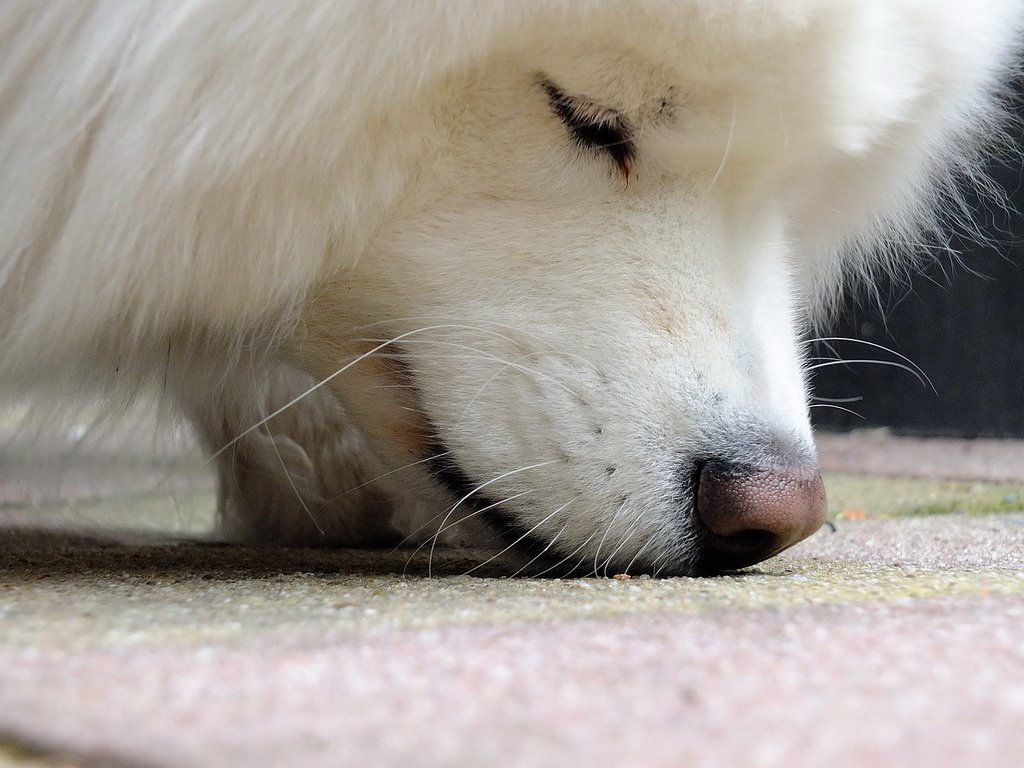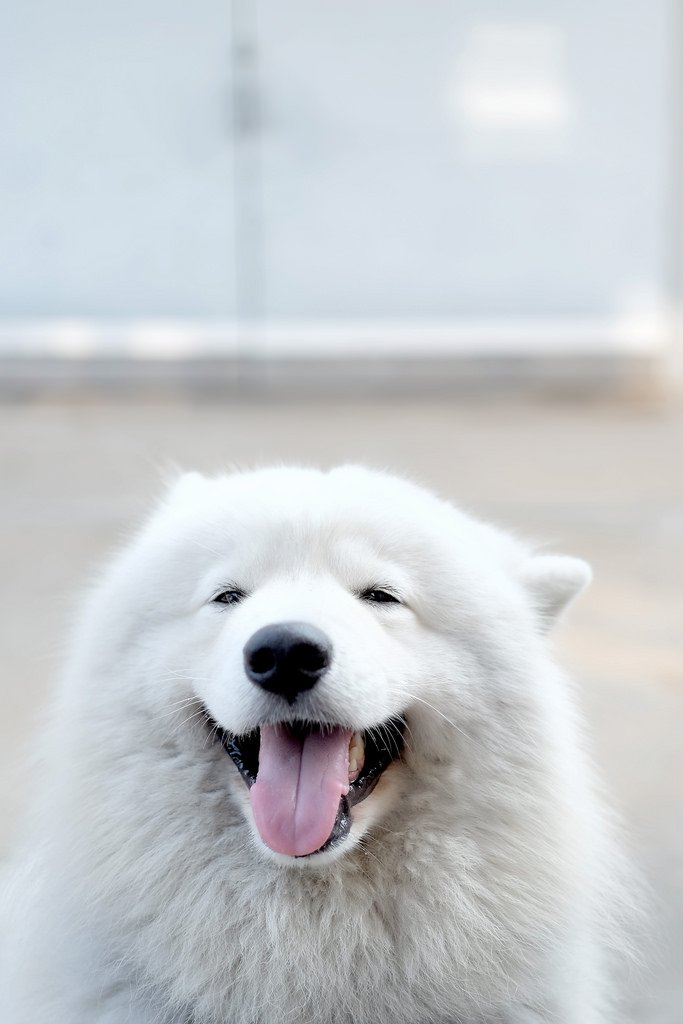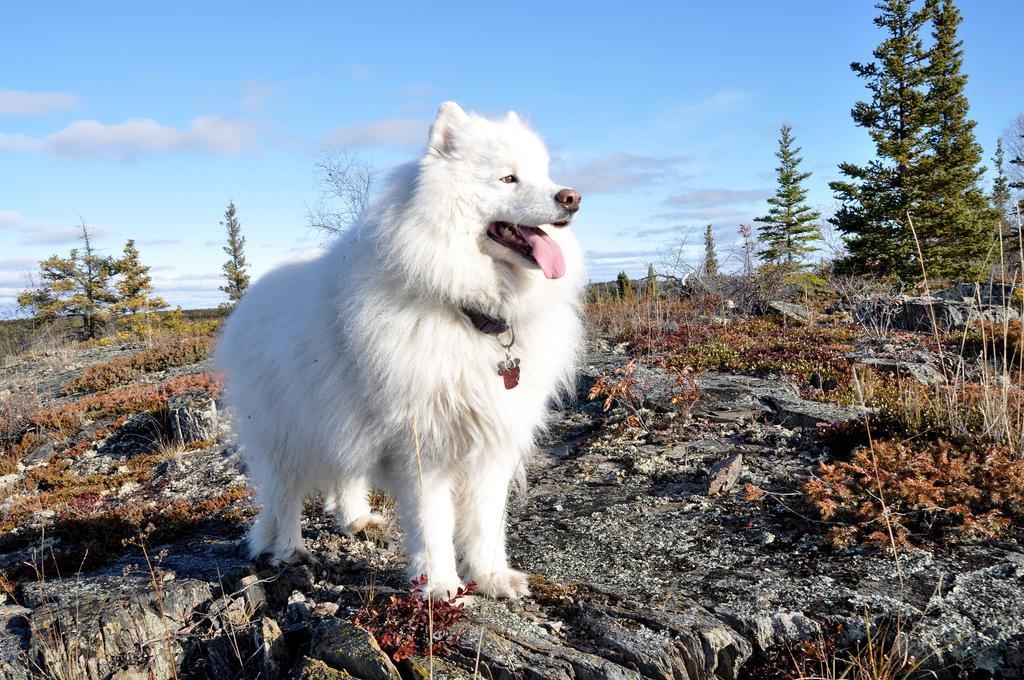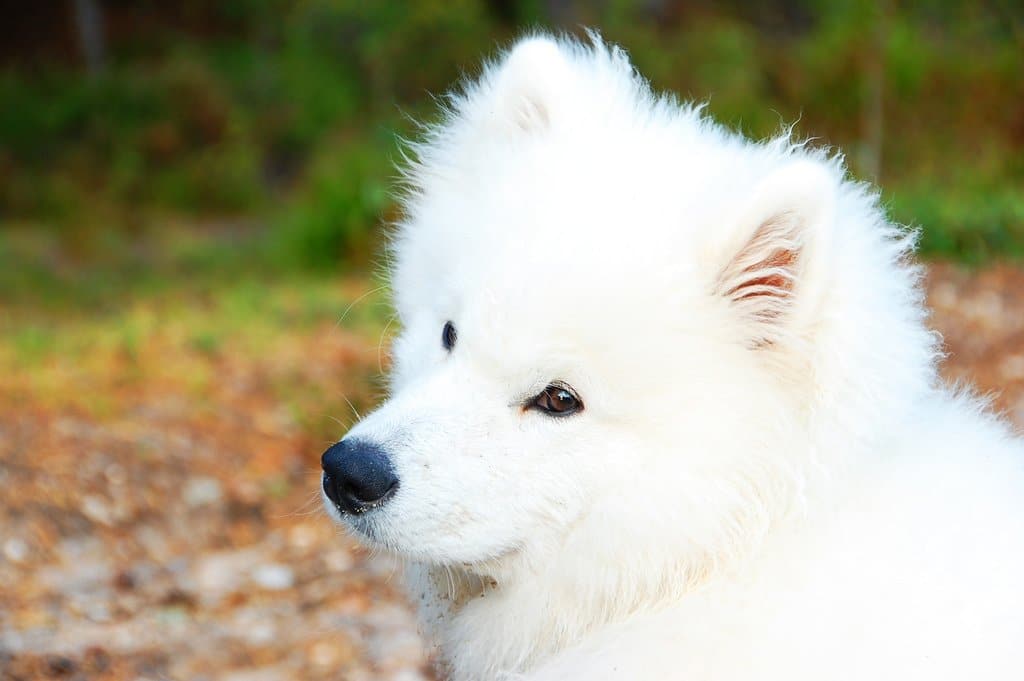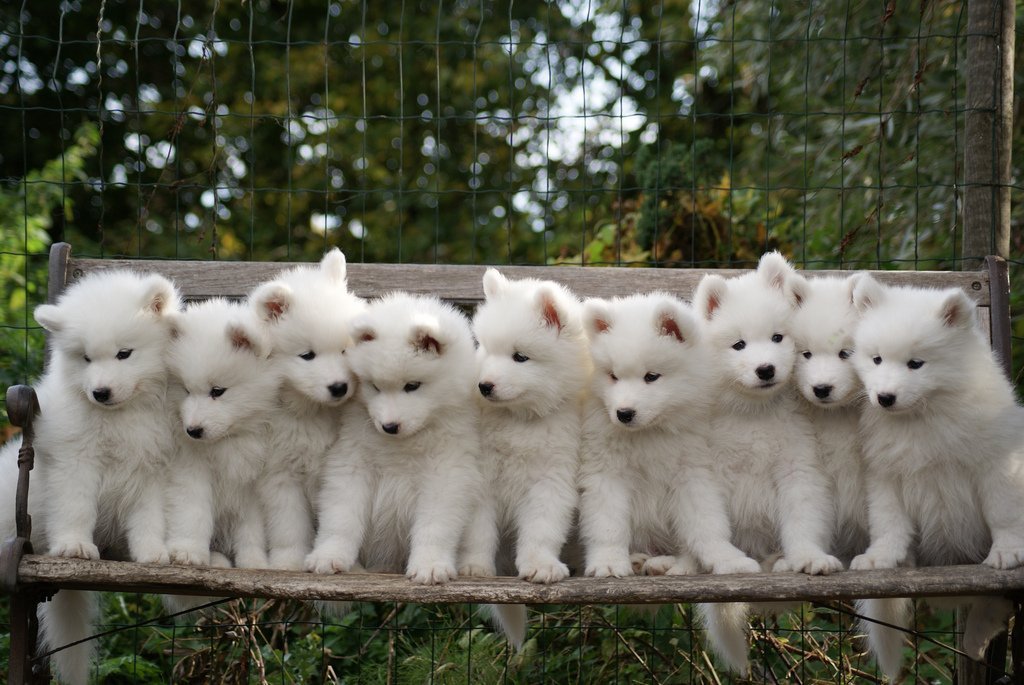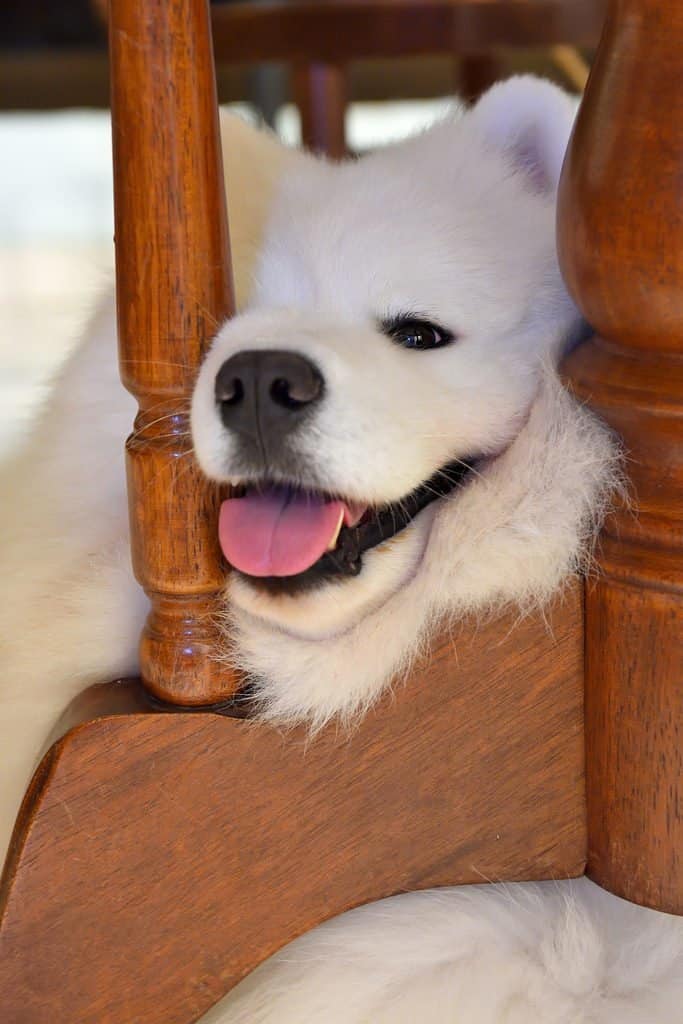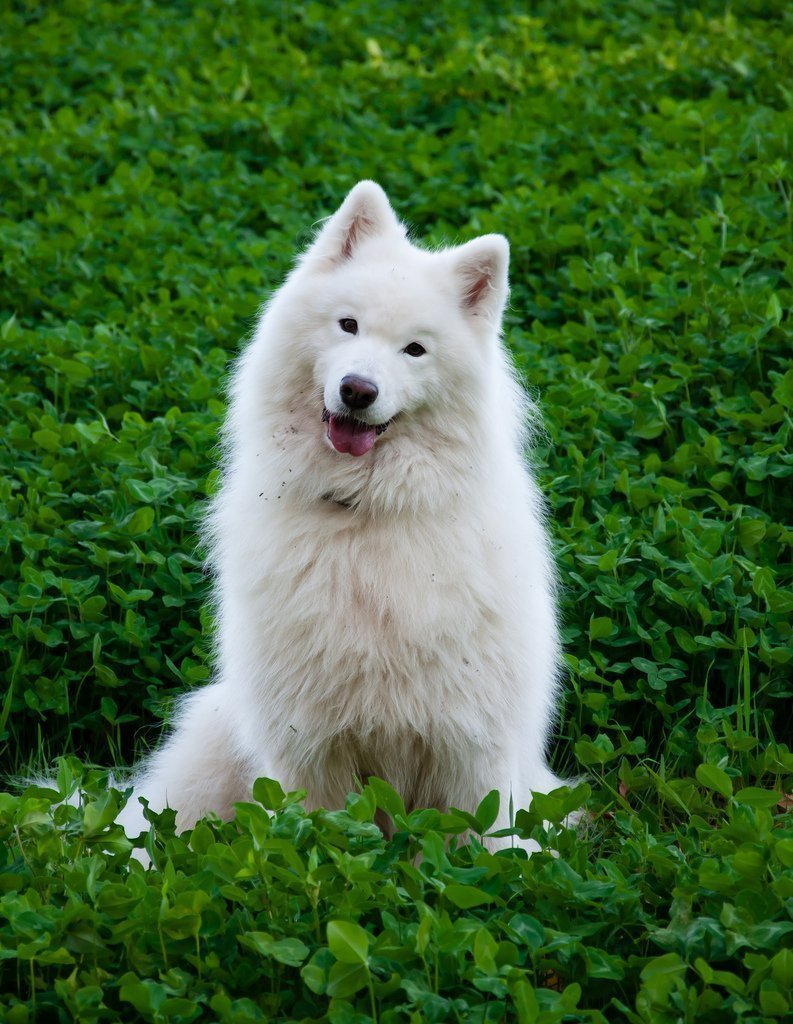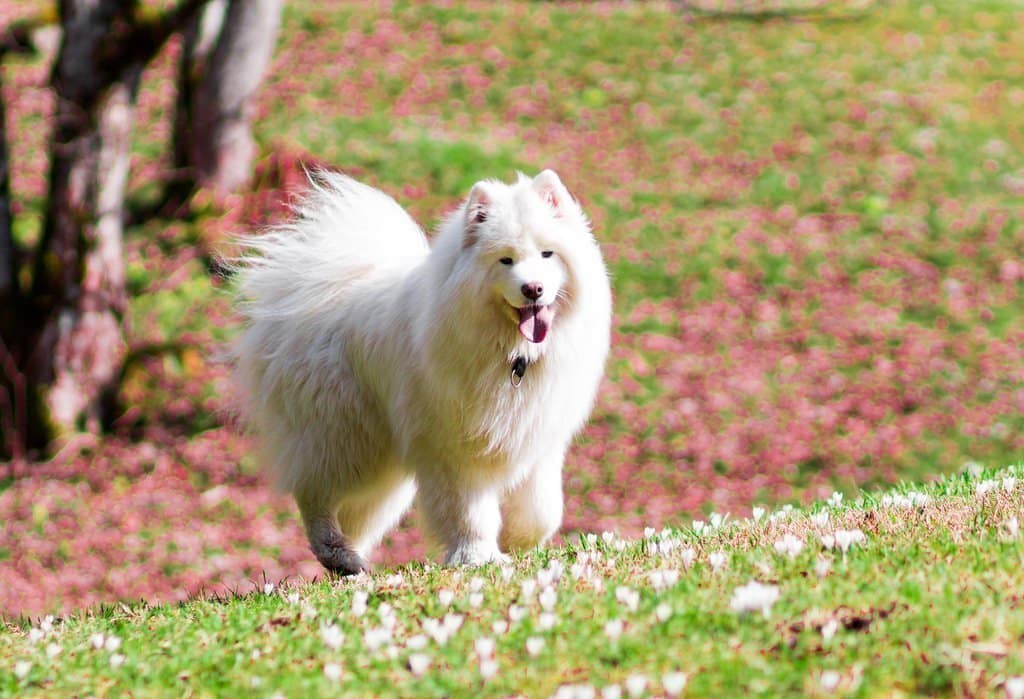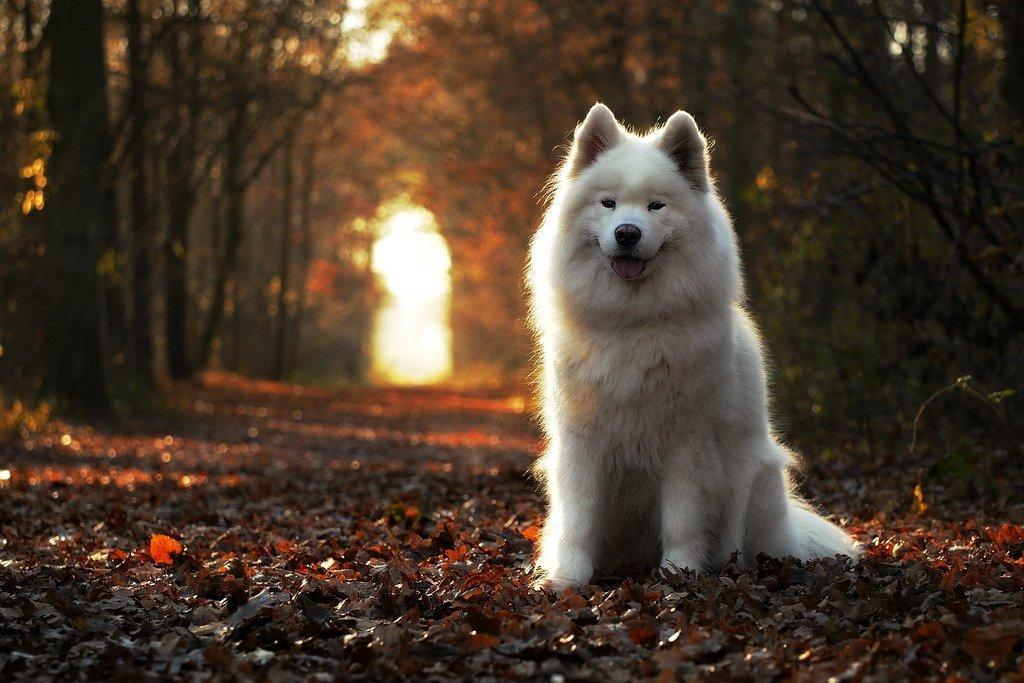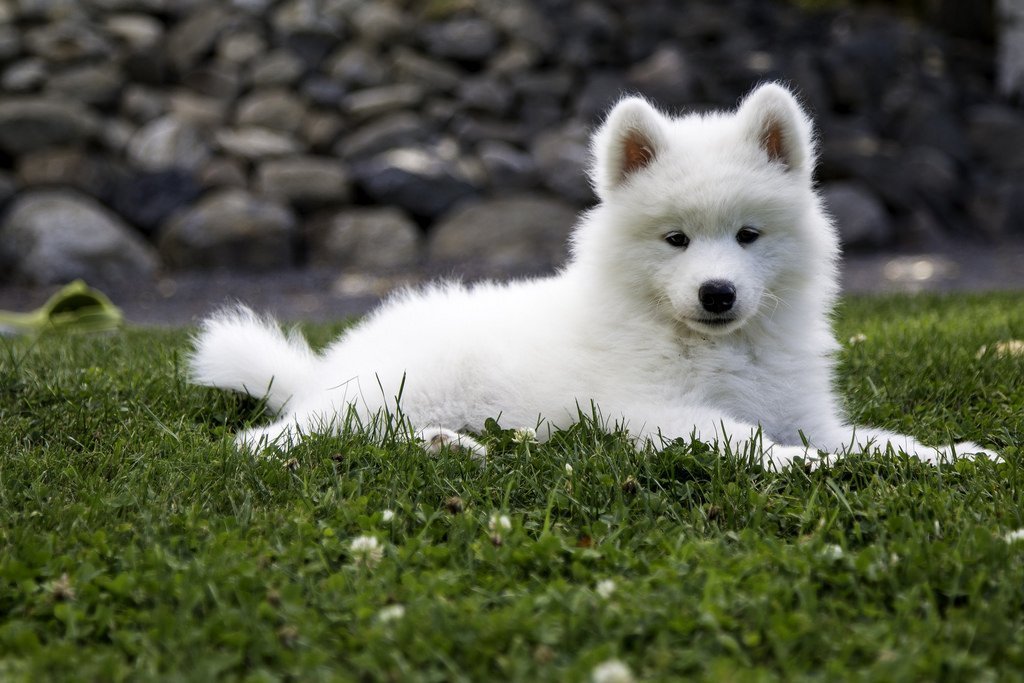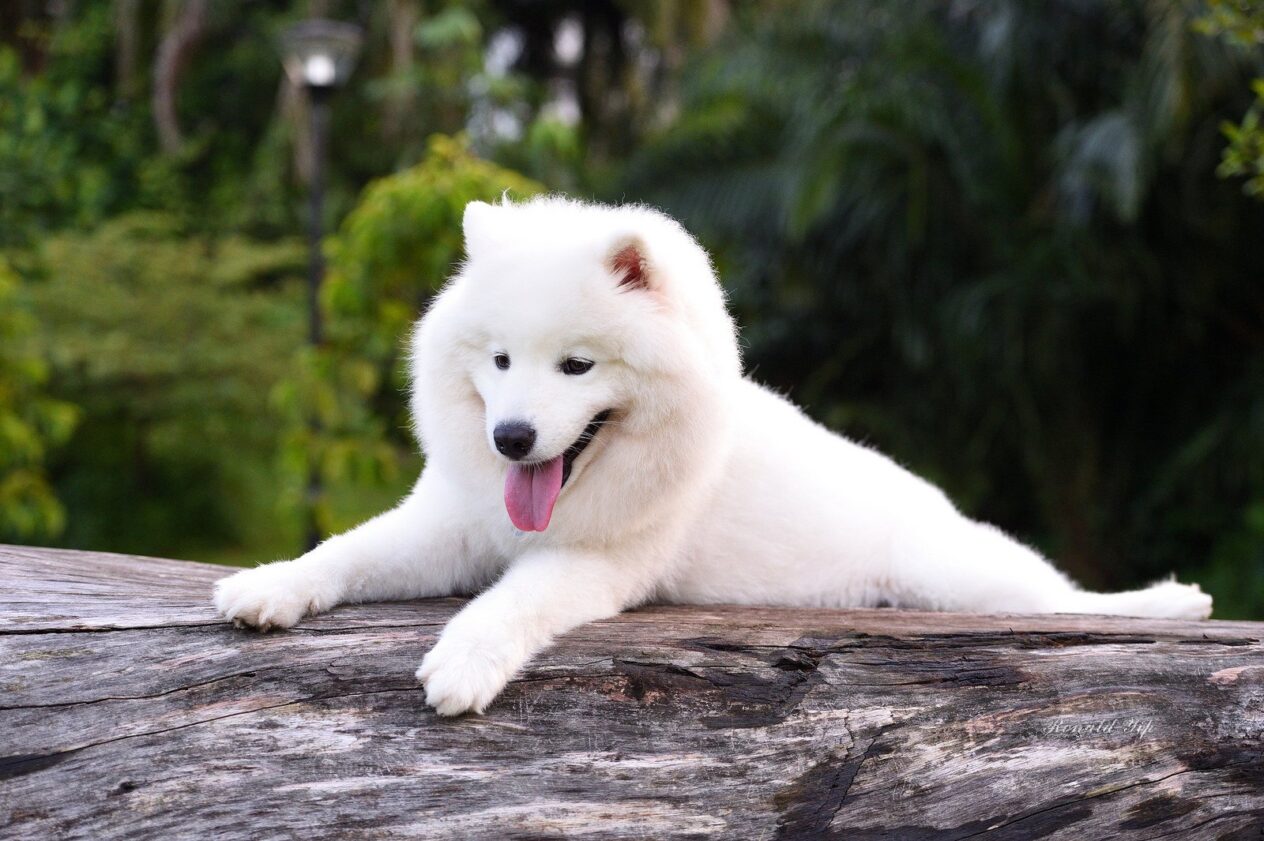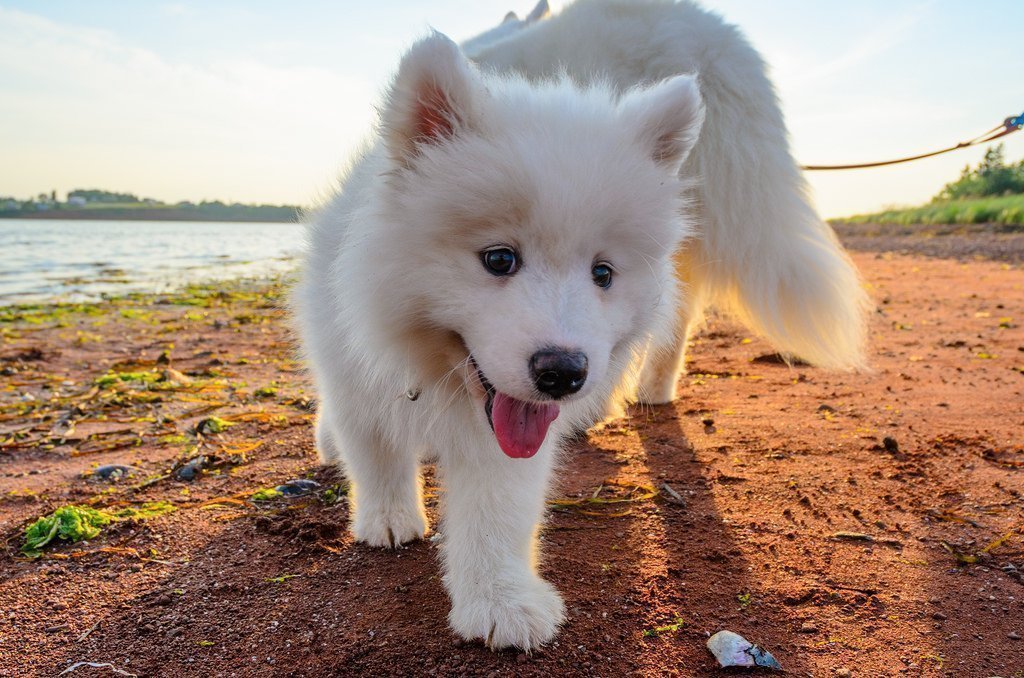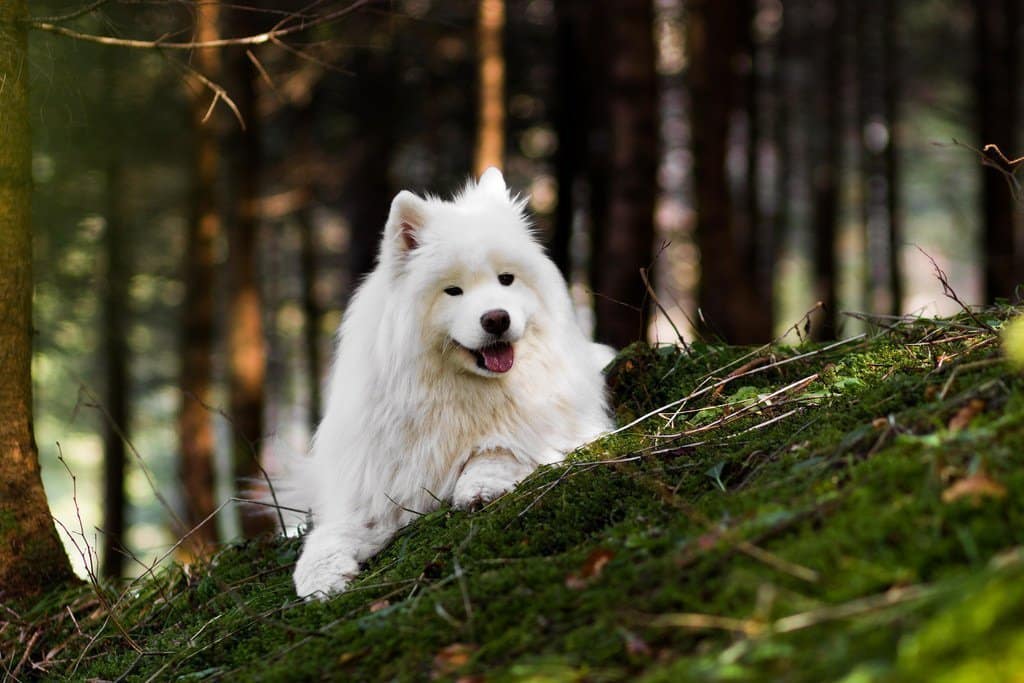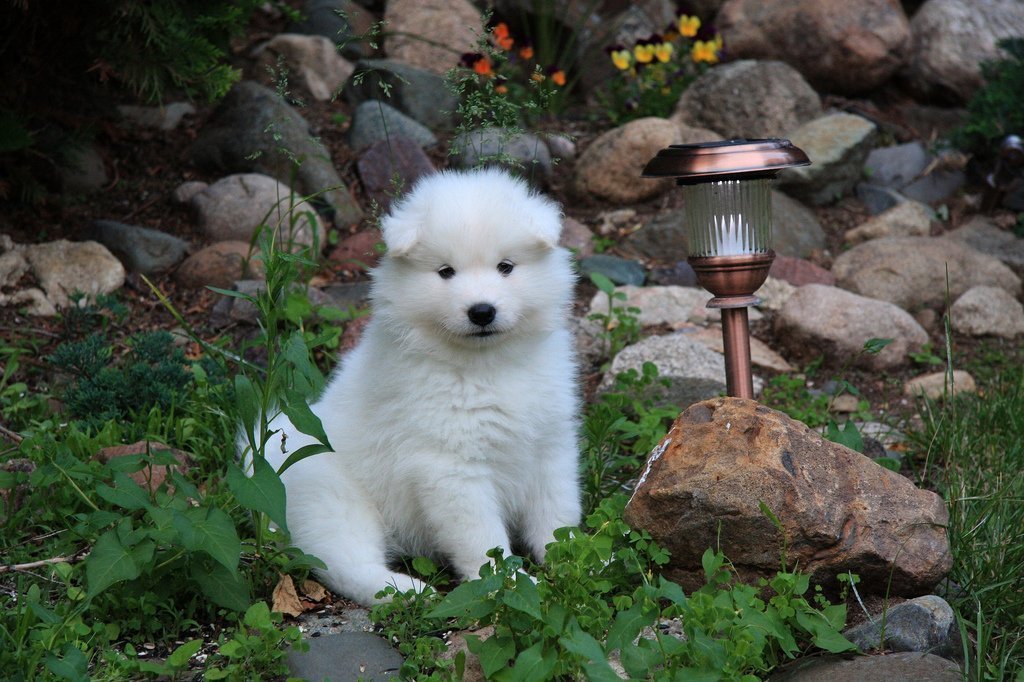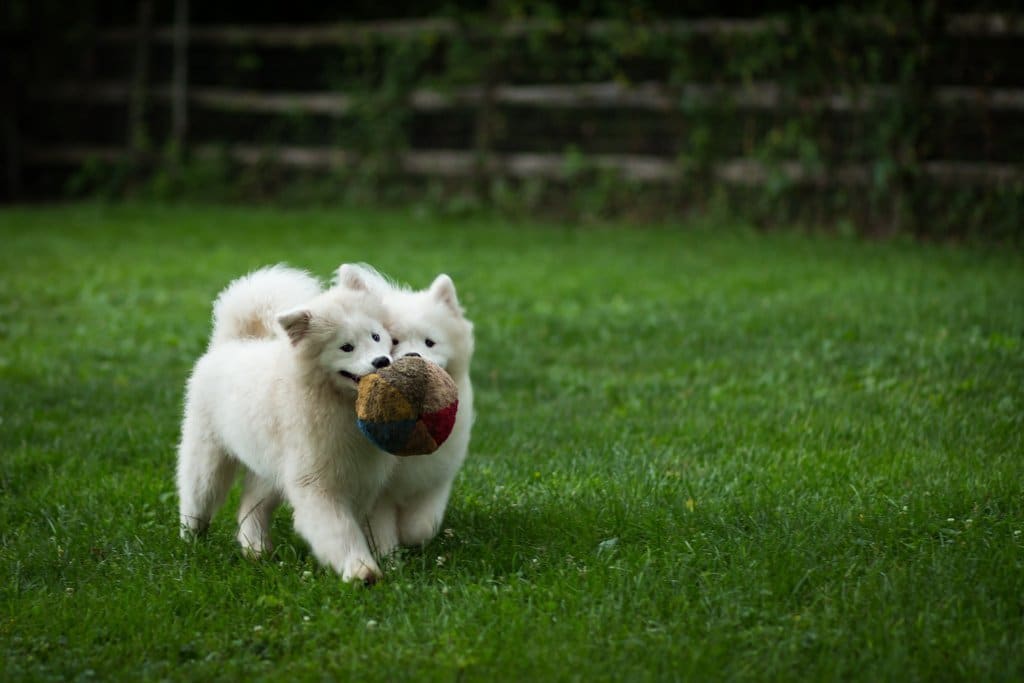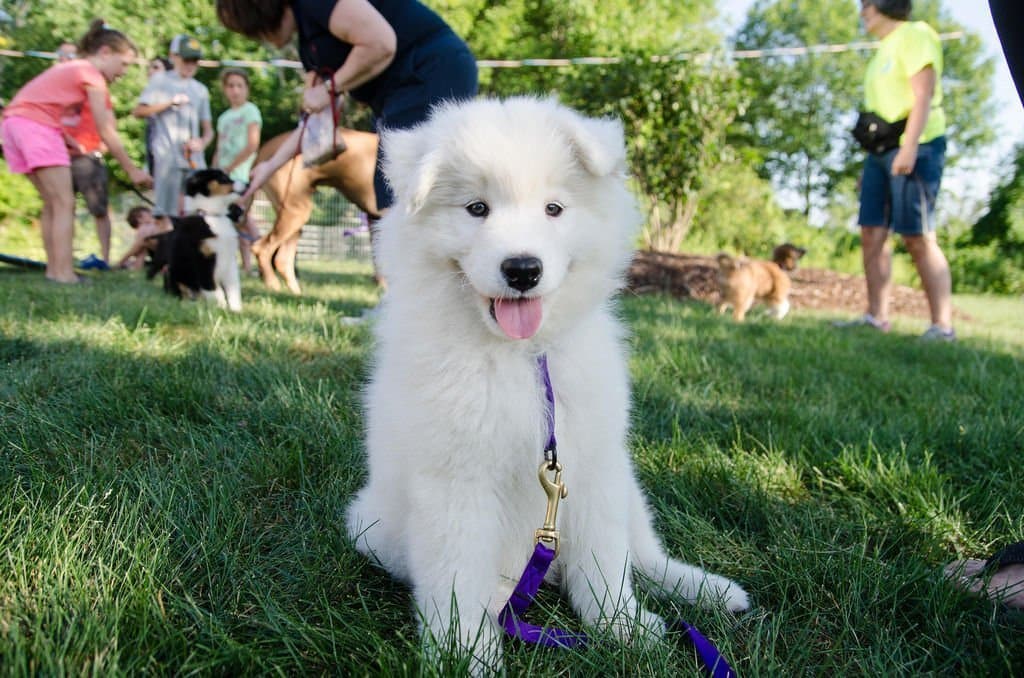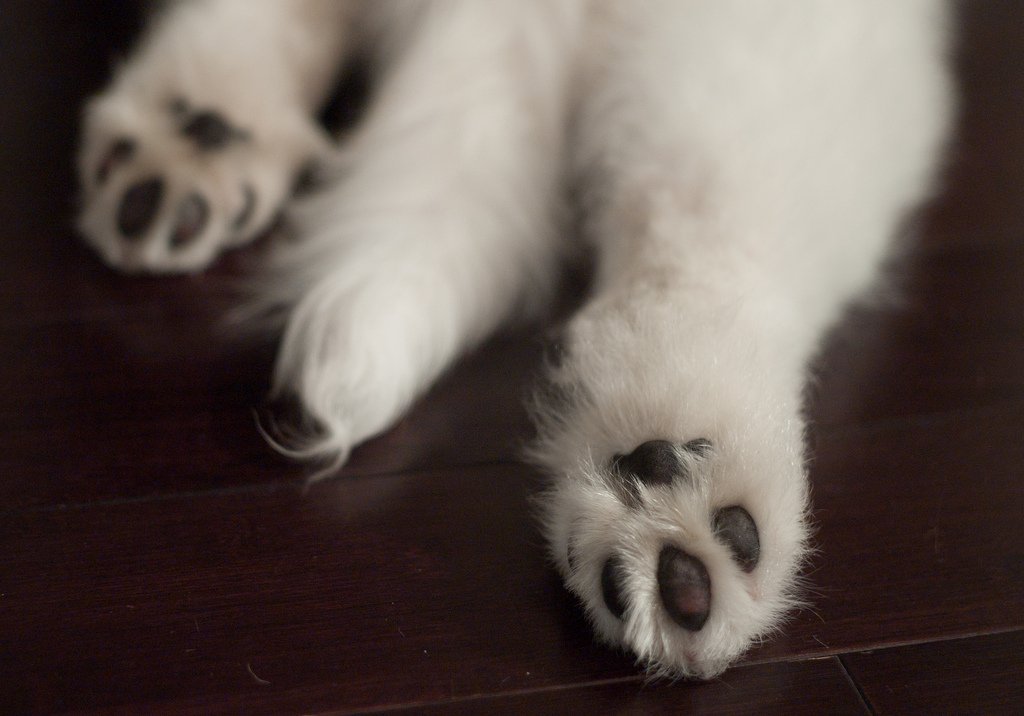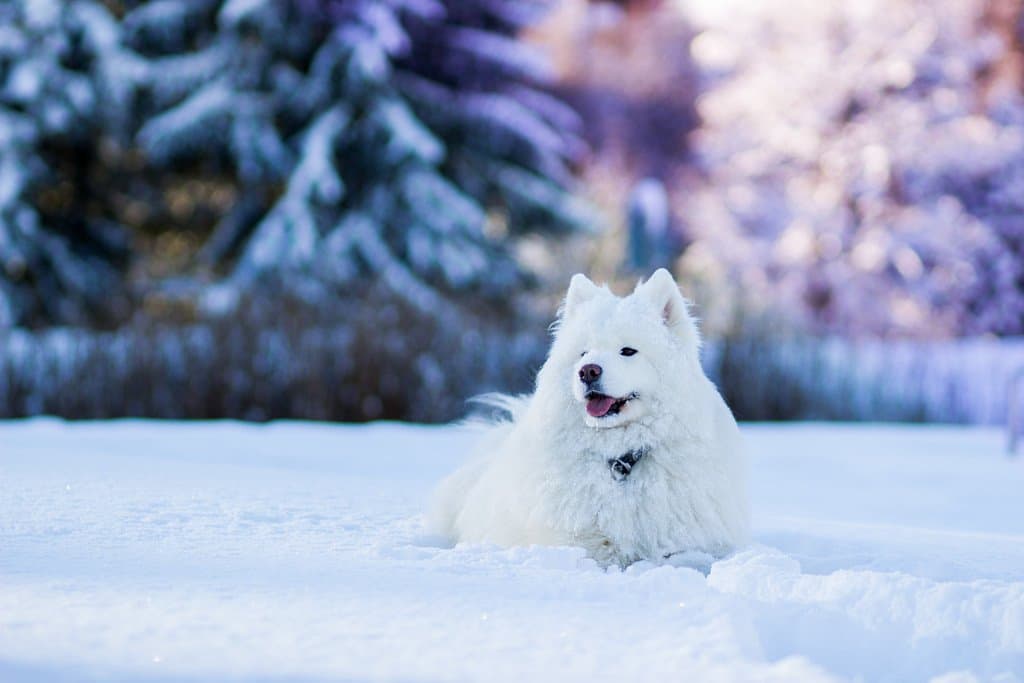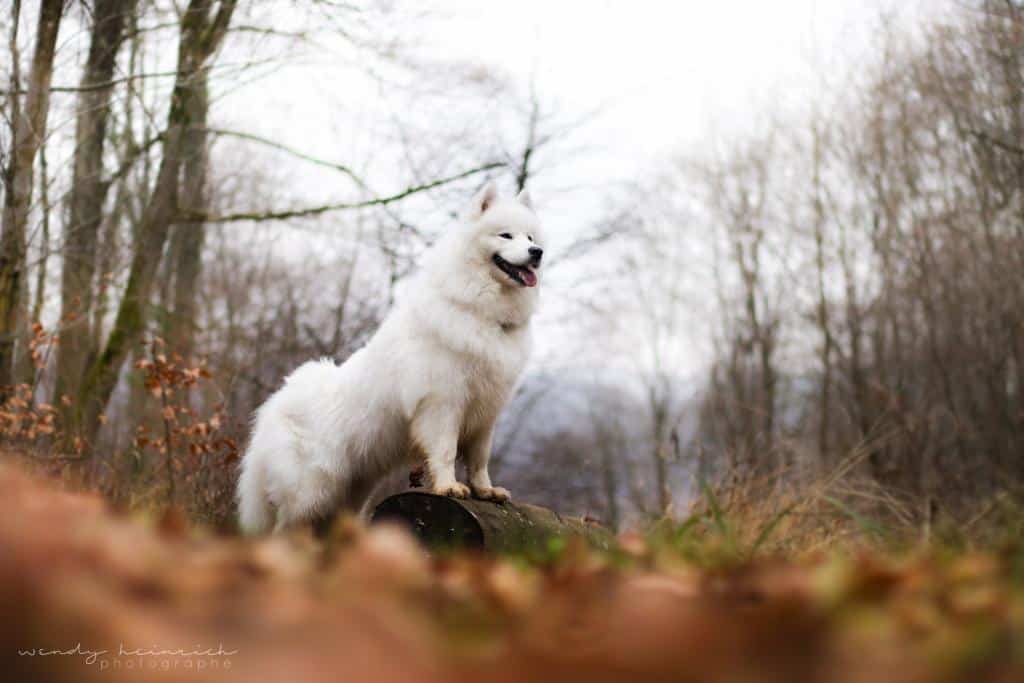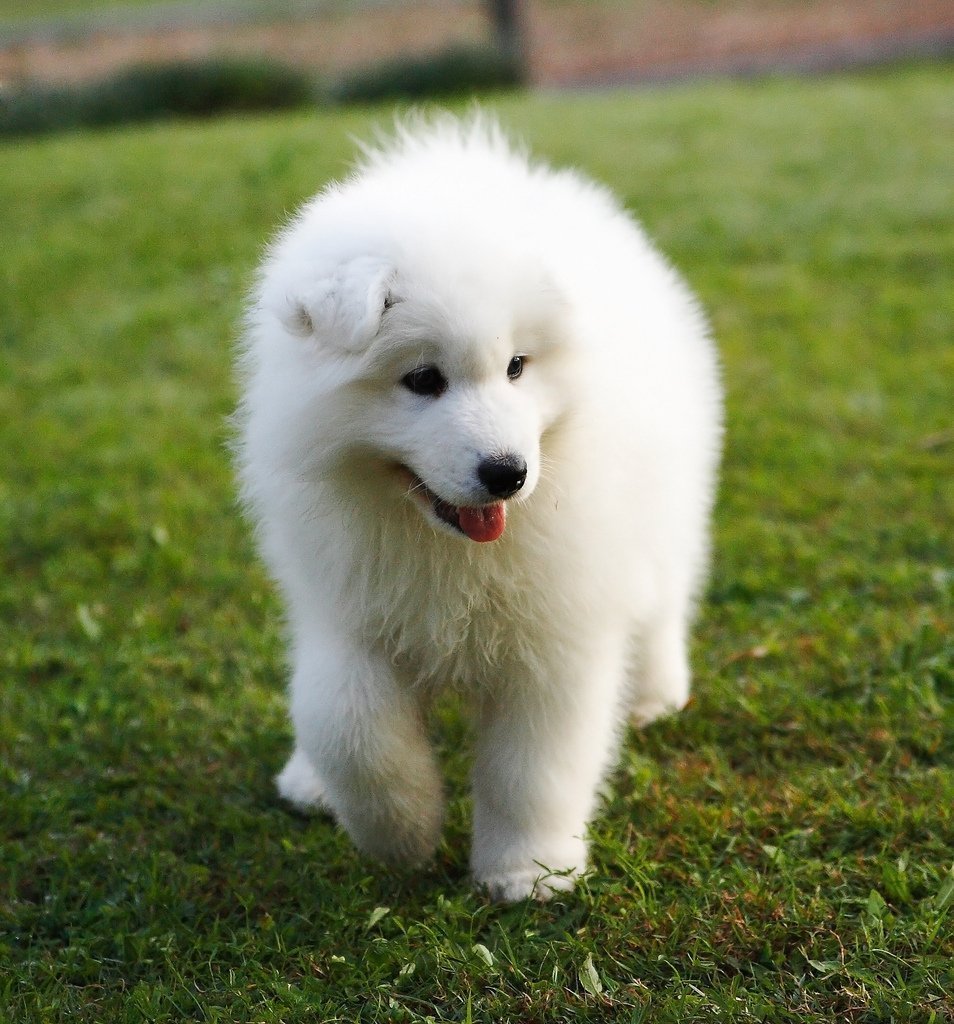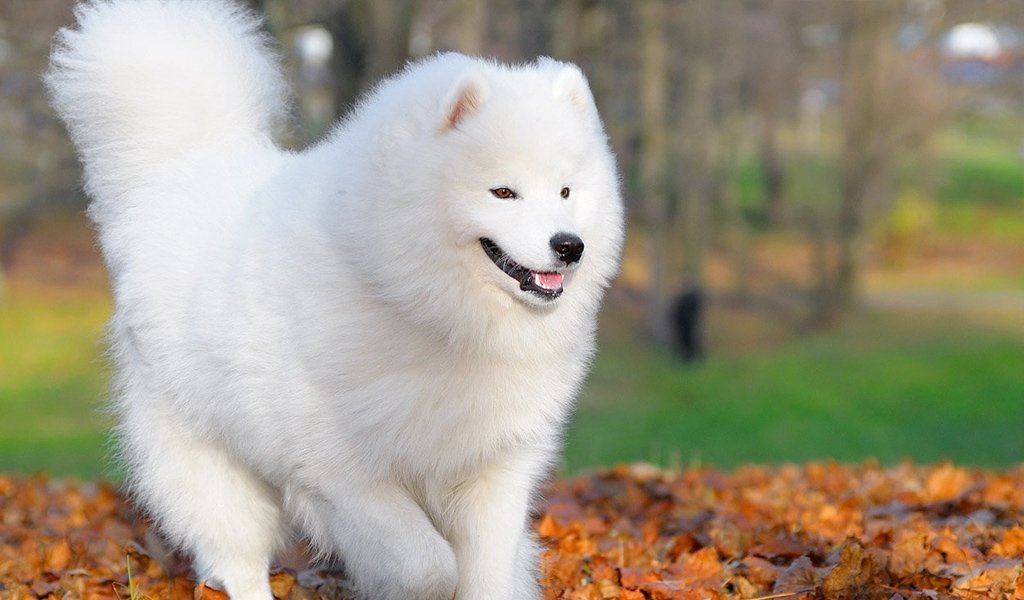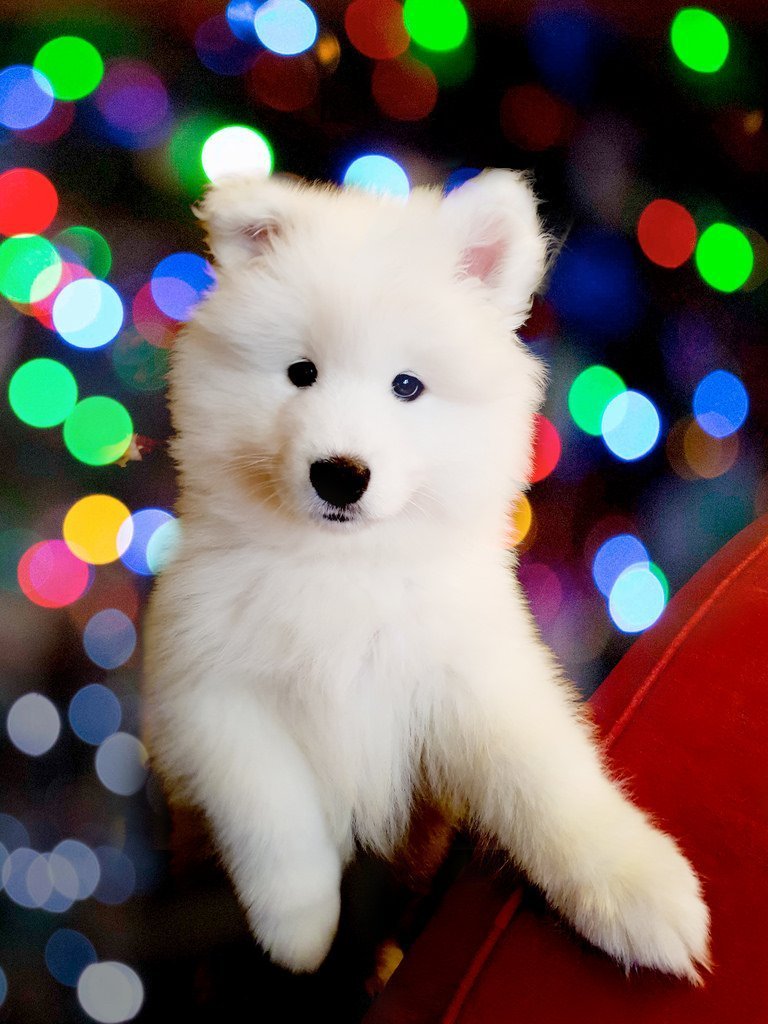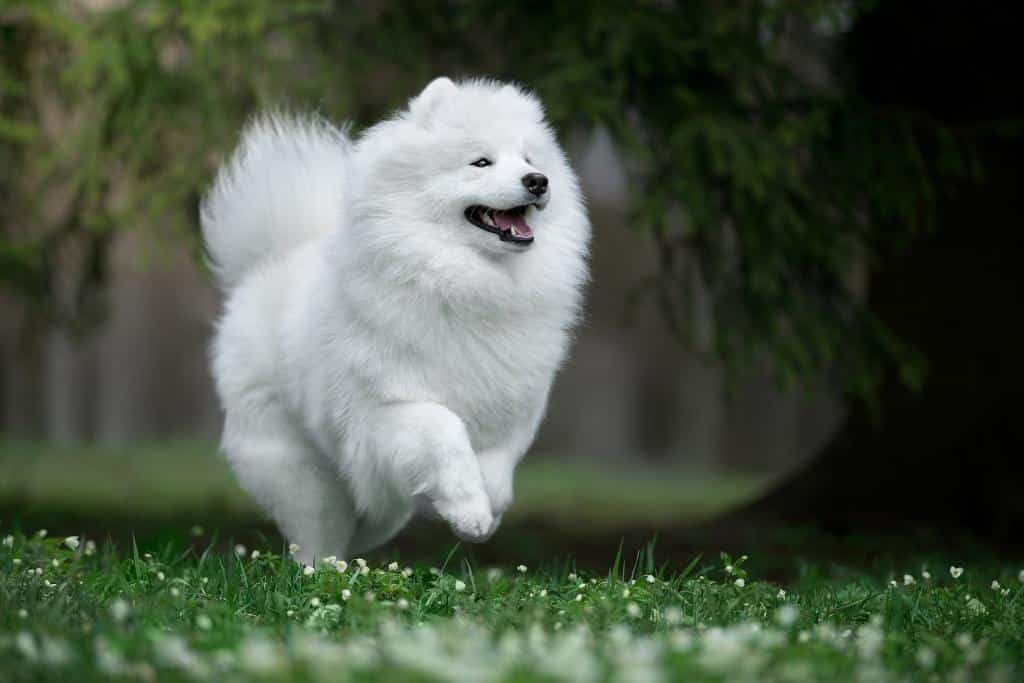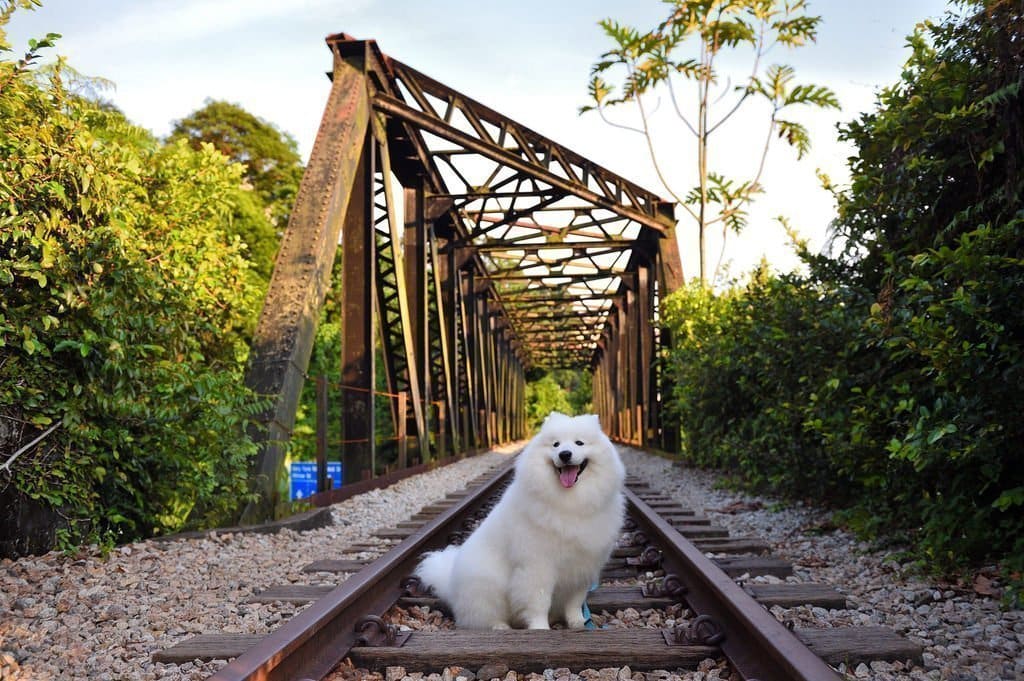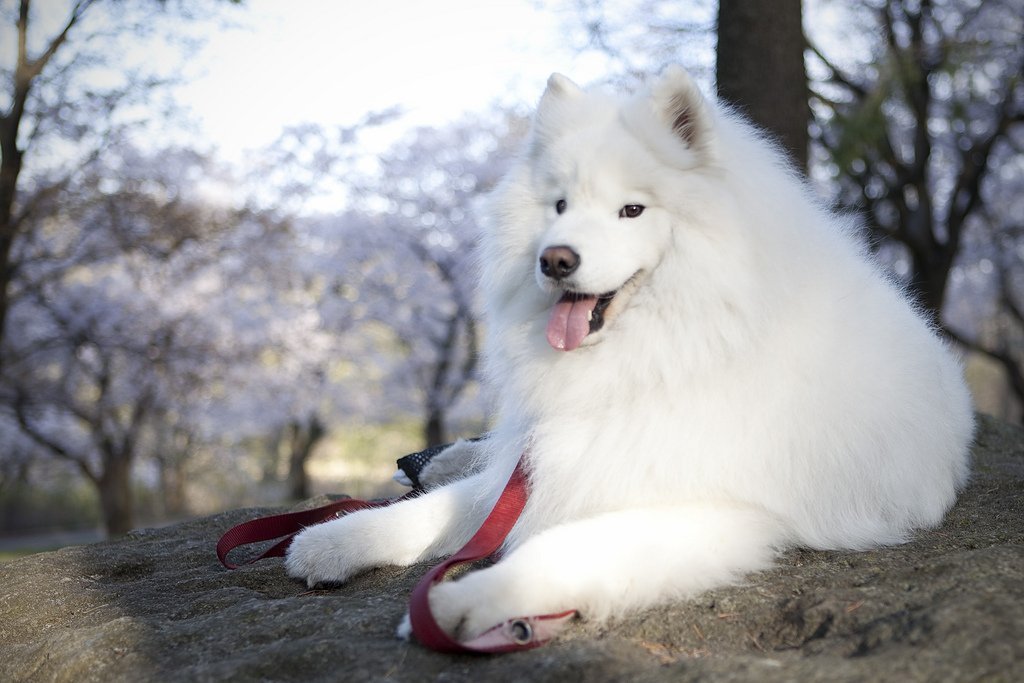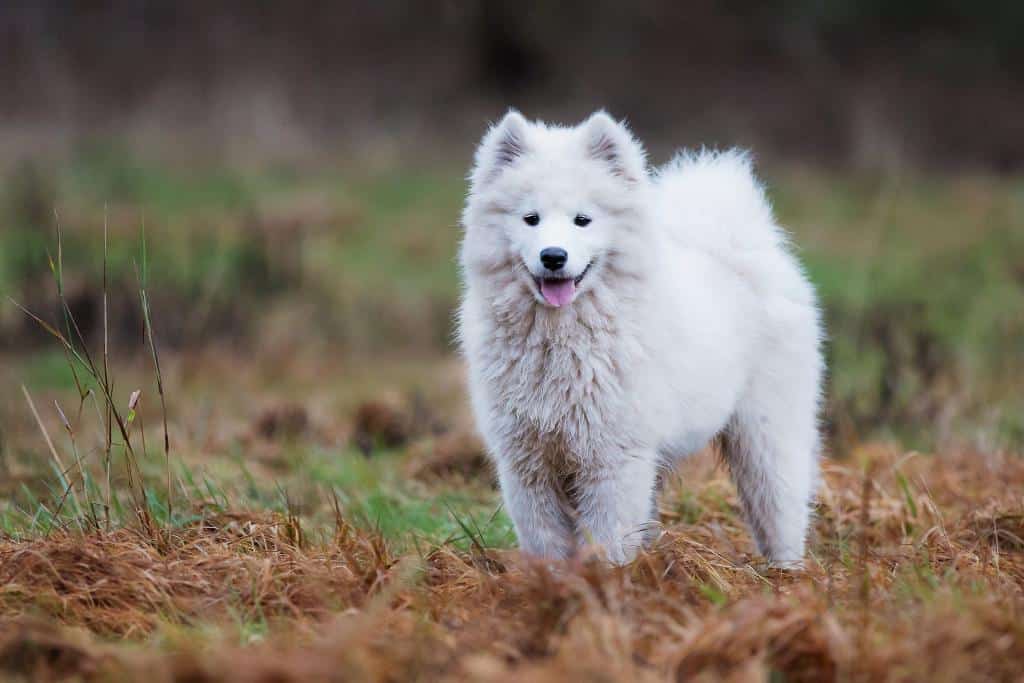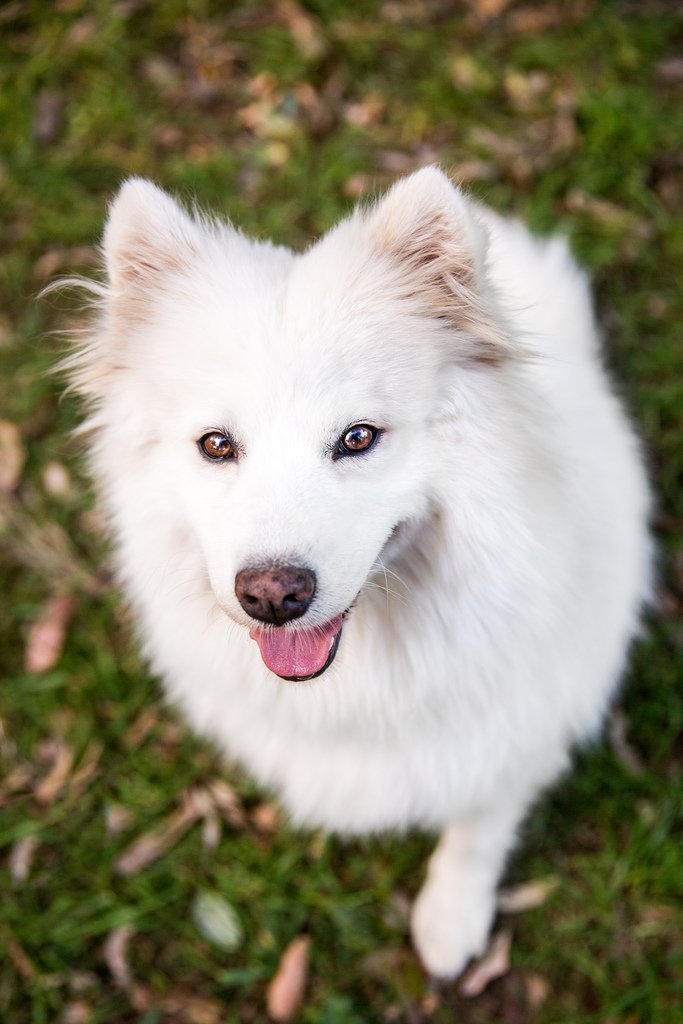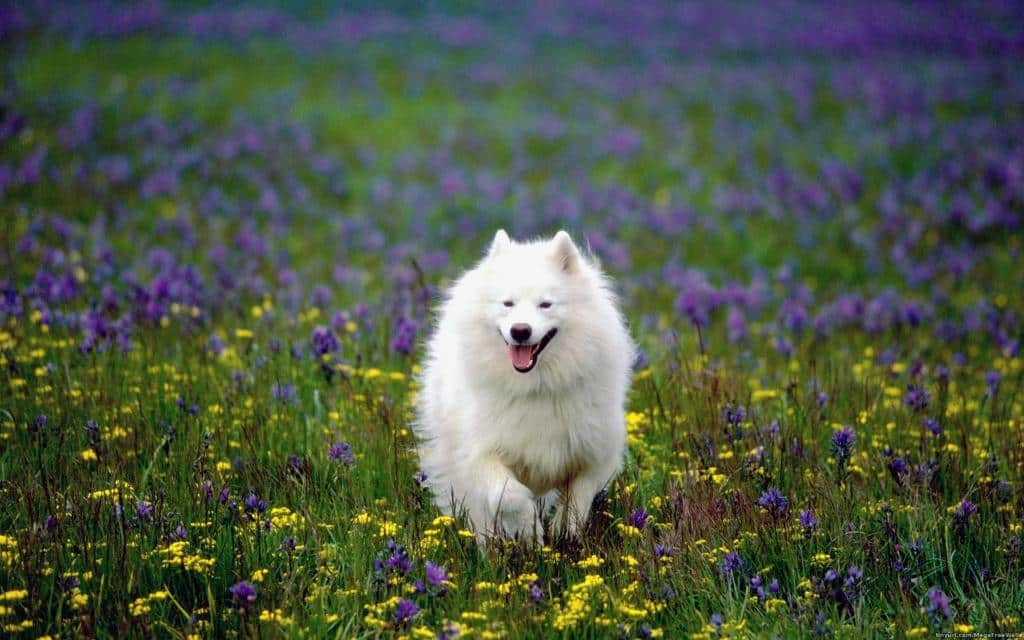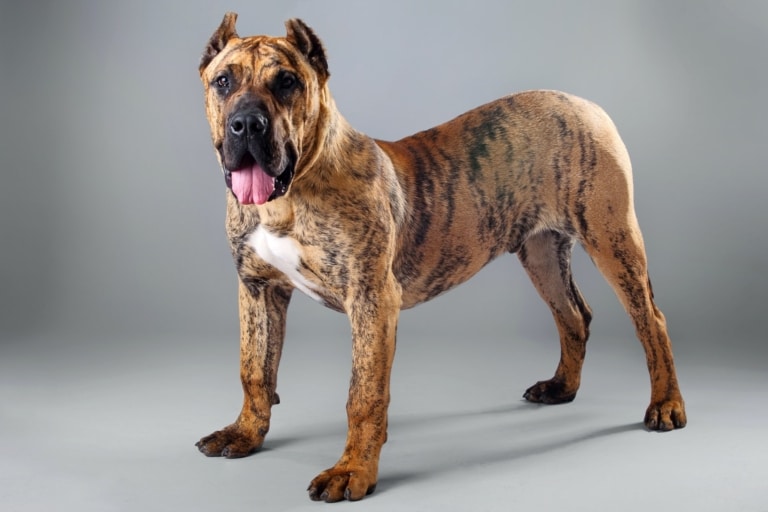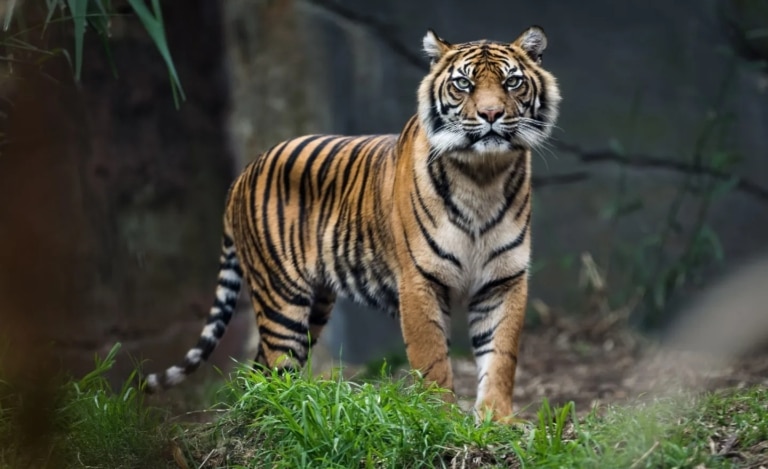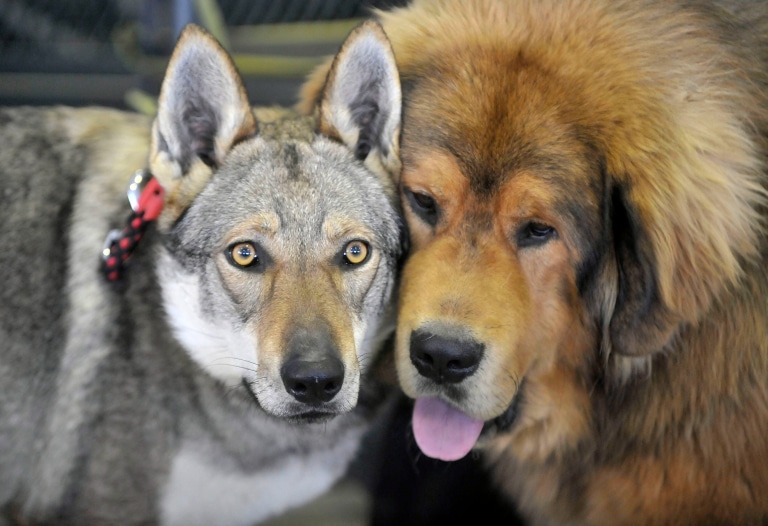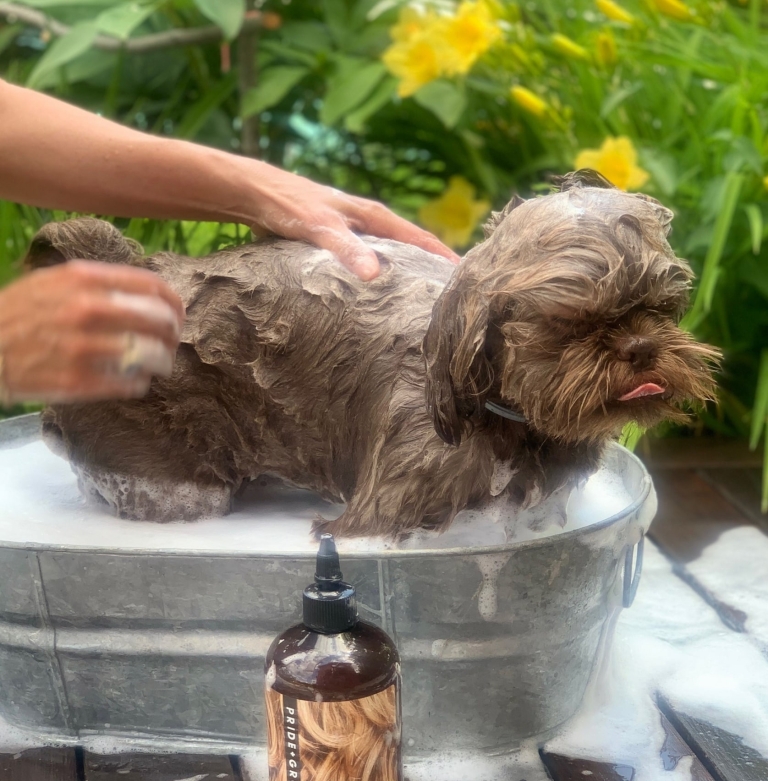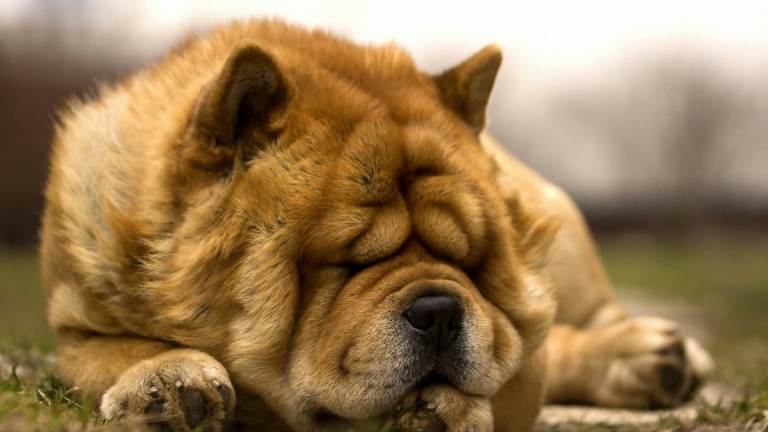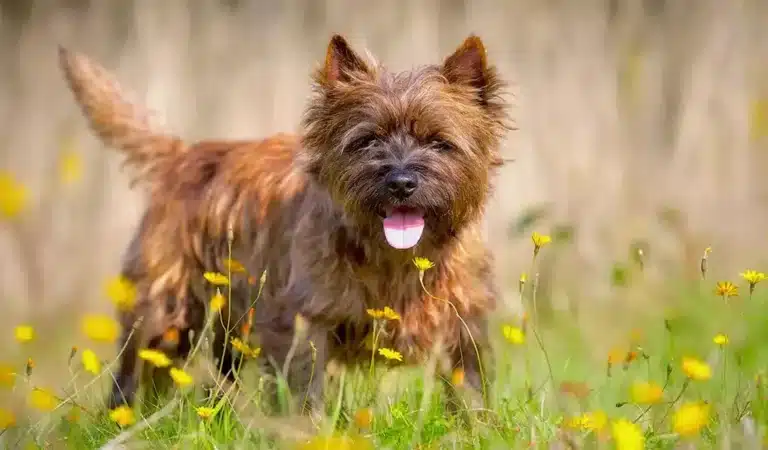The Samoyed is one of the oldest breeds with a centuries-old history and deep roots in the culture of the northern peoples. These dogs not only charm with their appearance, but also impress with their friendliness, intelligence and diligence.
History and origin
The breed originates from the Arctic regions, where the Samoyeds lived together with the nomadic tribes of the Samoyeds (Nenets), from whom they got their name. They were used for grazing deer, hunting and transporting goods on sledges. Their ability to withstand extreme temperatures and work in harsh conditions made them ideal for northern peoples. They also served as heaters, sleeping with people on cold nights, providing warmth with their thick fur coats.
The Samoyeds became known outside of Siberia thanks to the expeditions of Europeans at the end of the 19th and the beginning of the 20th centuries. The Norwegian polar explorer Fritjof Nansen used them on his travels to the Arctic, which brought attention to this breed in Europe. They have shown themselves to be reliable and hardy animals capable of working in extreme conditions.
The first Samoyeds were brought to England at the end of the 19th century. They quickly gained popularity due to their impressive appearance and friendly nature.
English breeders began to breed Samoyeds, adhering to the standards of the breed. In 1909, the first club of Samoyed lovers in Great Britain was created. Since then, the breed has spread throughout the world, including the United States, Canada, Australia and other countries. Today, Samoyeds are one of the most popular dog breeds in the world.
Appearance
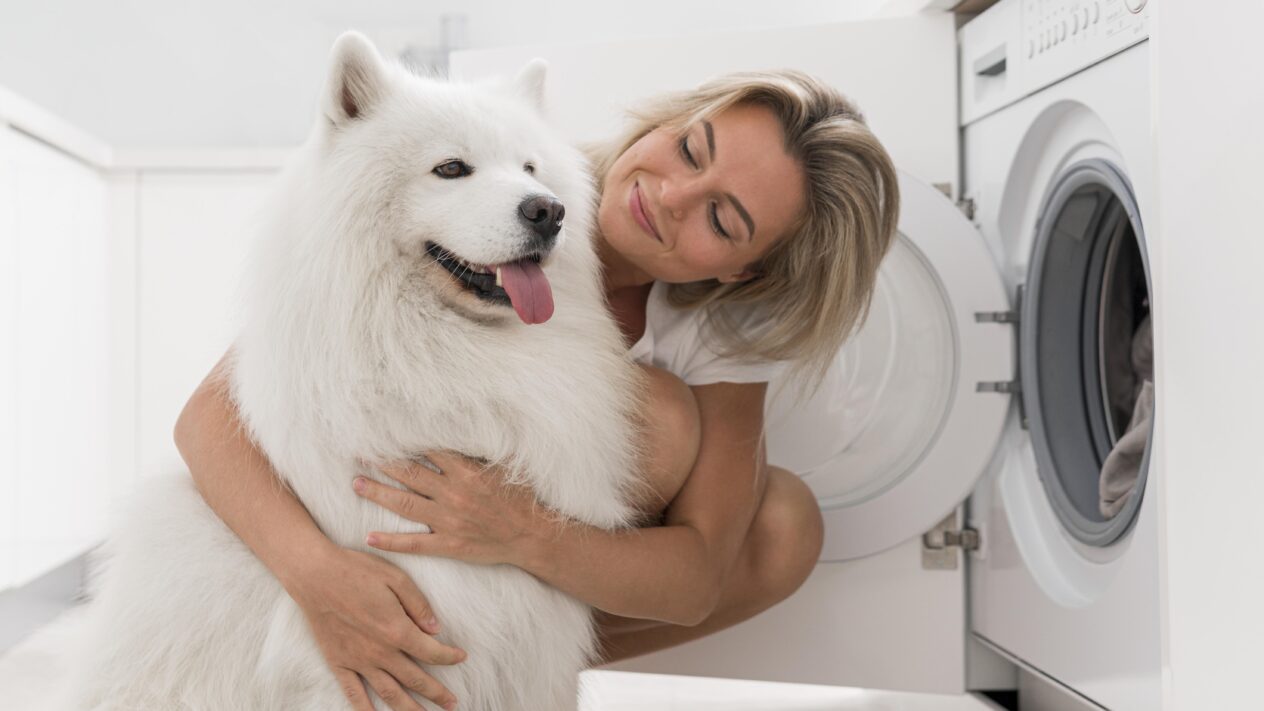
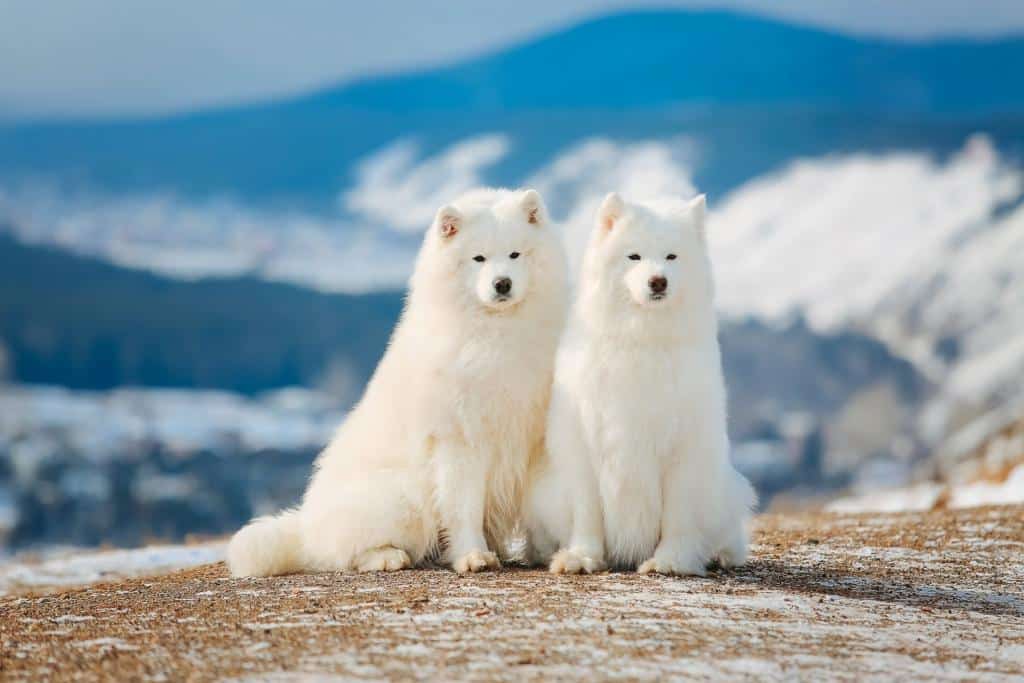
The Samoyed has a characteristic fluffy white coat, which consists of a thick, soft undercoat and a long, stiff topcoat, which allows them to withstand low temperatures. The color can be pure white, cream or white with a beige shade (biscuit).
Their expressive dark almond-shaped eyes and the famous “Samoyed smile” (the corners of the mouth are turned up) give them a friendly and welcoming appearance.
Samoyeds have a well-proportioned, strong body, which indicates their endurance and strength. They are muscular, but not too heavy, which allows them to remain active and mobile. The average height of a Samoyed is 50-60 cm at the withers, and the weight is from 20 to 30 kg.
Character and temperament
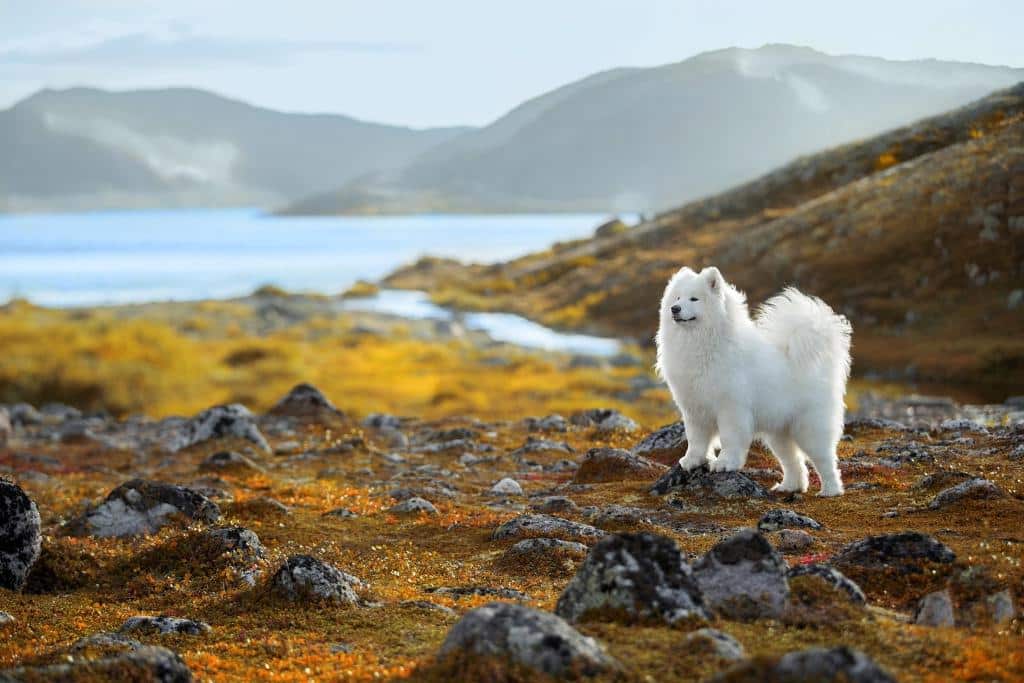
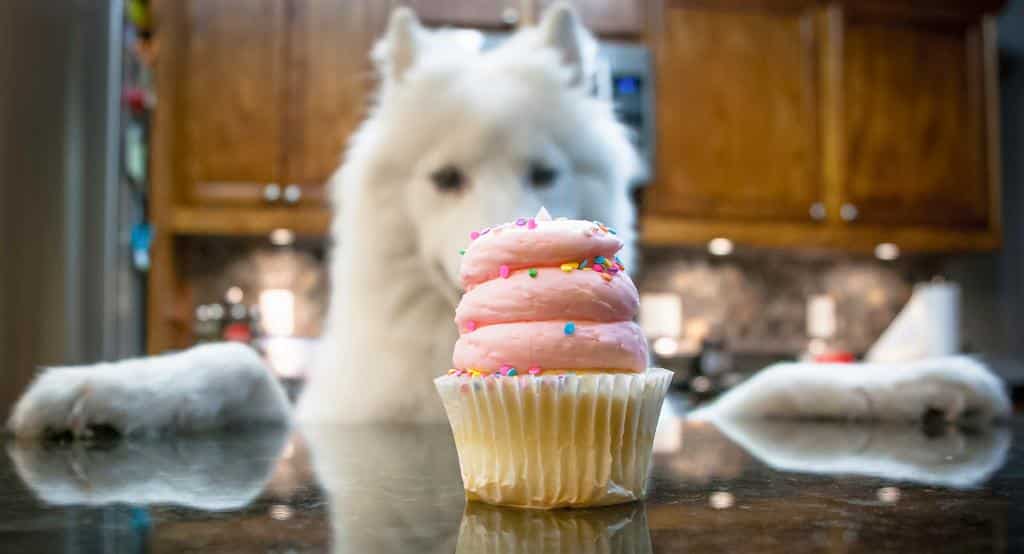
Samoyeds are known for their sociability. They are very people-oriented, always want to be part of the family and do not like to be alone for a long time. Their sociable and friendly nature makes them great companions for children and adults. They get along well with other animals, although they can be a bit stubborn if they don’t get enough attention. Samoyeds are also very intelligent and easy to train, especially if the training process takes place in a playful way and with the use of positive reinforcement. They need regular exercise, so they need long walks and the opportunity to run freely. Without proper training, Samoyeds can become restless and disobedient.
Health
Samoyeds are generally a healthy breed, but like all large dogs, they can have health problems such as hip dysplasia, eye problems, allergies, diabetes and thyroid problems. Regular veterinary examinations and a healthy lifestyle will help maintain their health.
Caring for Samoyeds
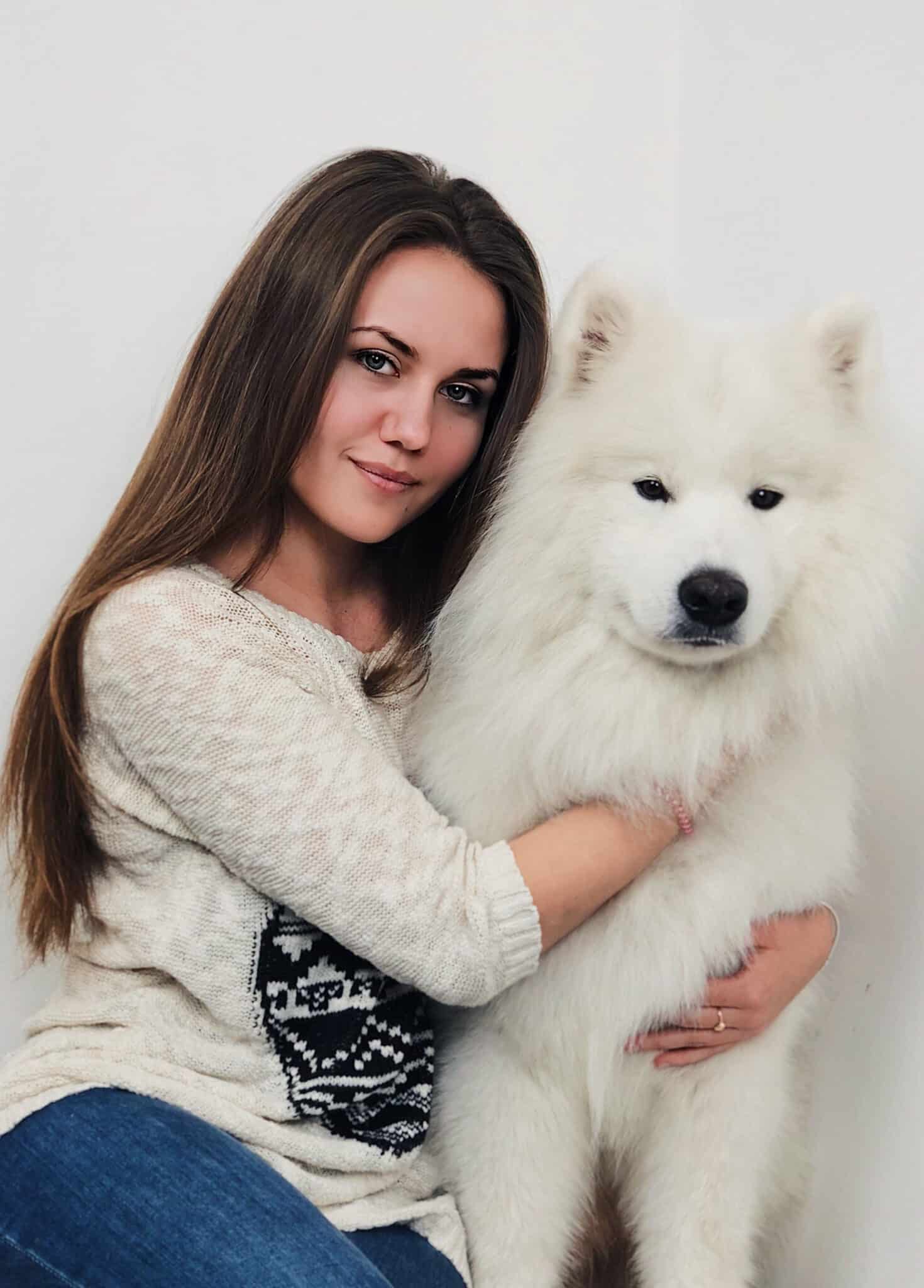
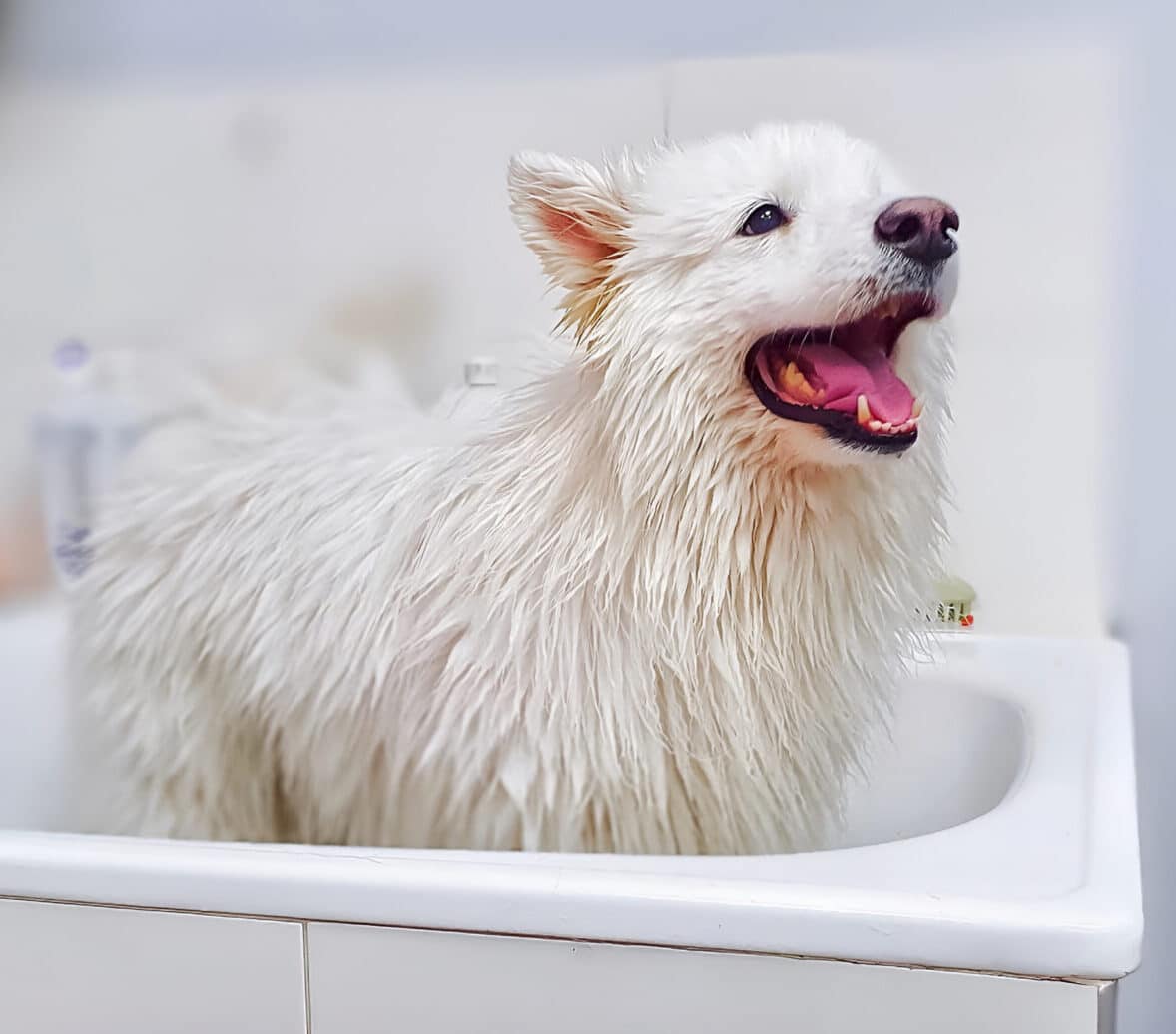
Caring for a Samoyed requires certain knowledge and regular procedures to maintain the pet’s health and appearance. Here are its main aspects:
- Regular combing of the coat at least twice a week, and during shedding – daily. This helps to remove dead hairs and prevent the formation of ingrown hairs.
- Bathing the Samoyed once every 1-2 months or when it gets very dirty. It is necessary to use warm water for the dog’s comfort (water that is too hot or cold can cause stress or discomfort) and avoid getting the shampoo in the eyes, ears and mouth. There is a variety of professional cosmetics on the market, which can be chosen both to solve certain problems and according to aromatic preferences. We advise you to pay more attention to moisturizing or hypoallergenic cosmetics and wash them off thoroughly to avoid any skin irritations.
After bathing, do not forget to praise and reward your Samoyed with treats so that he associates the bathing process with positive emotions
- After bathing, the coat of the Samoyed should be thoroughly dried, preferably using a hair dryer at a low temperature, so as not to burn the skin. It is important to make sure that the undercoat is completely dry, thereby reducing the risk of fungal infections.
- Trimming the Samoyed’s claws about once a month or as needed will prevent paw deformation.
- Checking the ears for dirt and signs of infection using special cleaning products is the same mandatory procedure as combing the fur.
- Regular brushing of the dog’s teeth with a special toothpaste prevents the formation of tartar and problems with the gums.
While regular grooming at home is very important, it’s worth visiting a professional groomer from time to time who can provide comprehensive grooming, de-shedding and trimming. Usually, a Samoyed haircut does not involve drastic changes, but rather involves trimming the fur around the paws, ears and tail. We will take a closer look at this controversial topic below.
Samoyed haircut
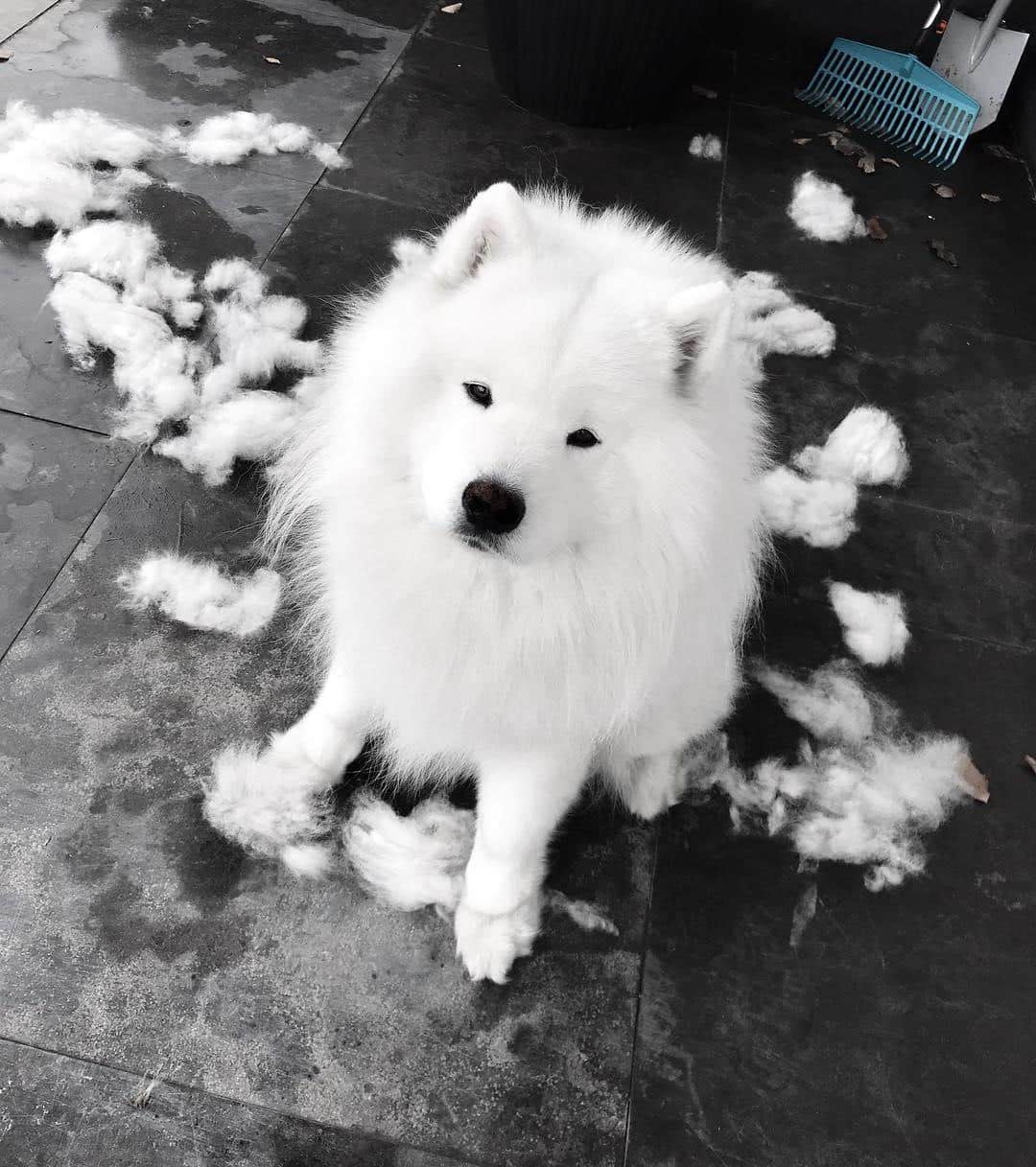
Samoyed haircut is a question that often worries the owners of this breed. The thick wool of Samoyeds consists of two layers: a soft undercoat (provides thermal insulation) and a harder top layer (protects against dirt and moisture). This combination provides effective protection against cold in winter and overheating in summer, thanks to thermoregulation.
In general, cutting a Samoyed is not recommended. V.O.G DOG dog groomers cite several reasons for this position:
- Samoyed wool performs an important function of thermoregulation. A significant shortening of the coat can disrupt this mechanism, making the dog more vulnerable to overheating in the summer and cold in the winter.
- Without a thick coat, the Samoyed’s skin becomes vulnerable to the sun’s rays, which can lead to burns and other skin problems.
- In some cases, after a haircut, the fur may not grow back properly or change its structure and its protective properties.
While clipping a Samoyed may seem like a logical decision in the heat or when grooming, it can actually do more harm than good. The best thing you can do for your Samoyed is to brush it regularly, keep its coat clean and provide proper grooming. If necessary, you can make a light edging haircut, but this is not a haircut in the classical sense.
The cost of grooming
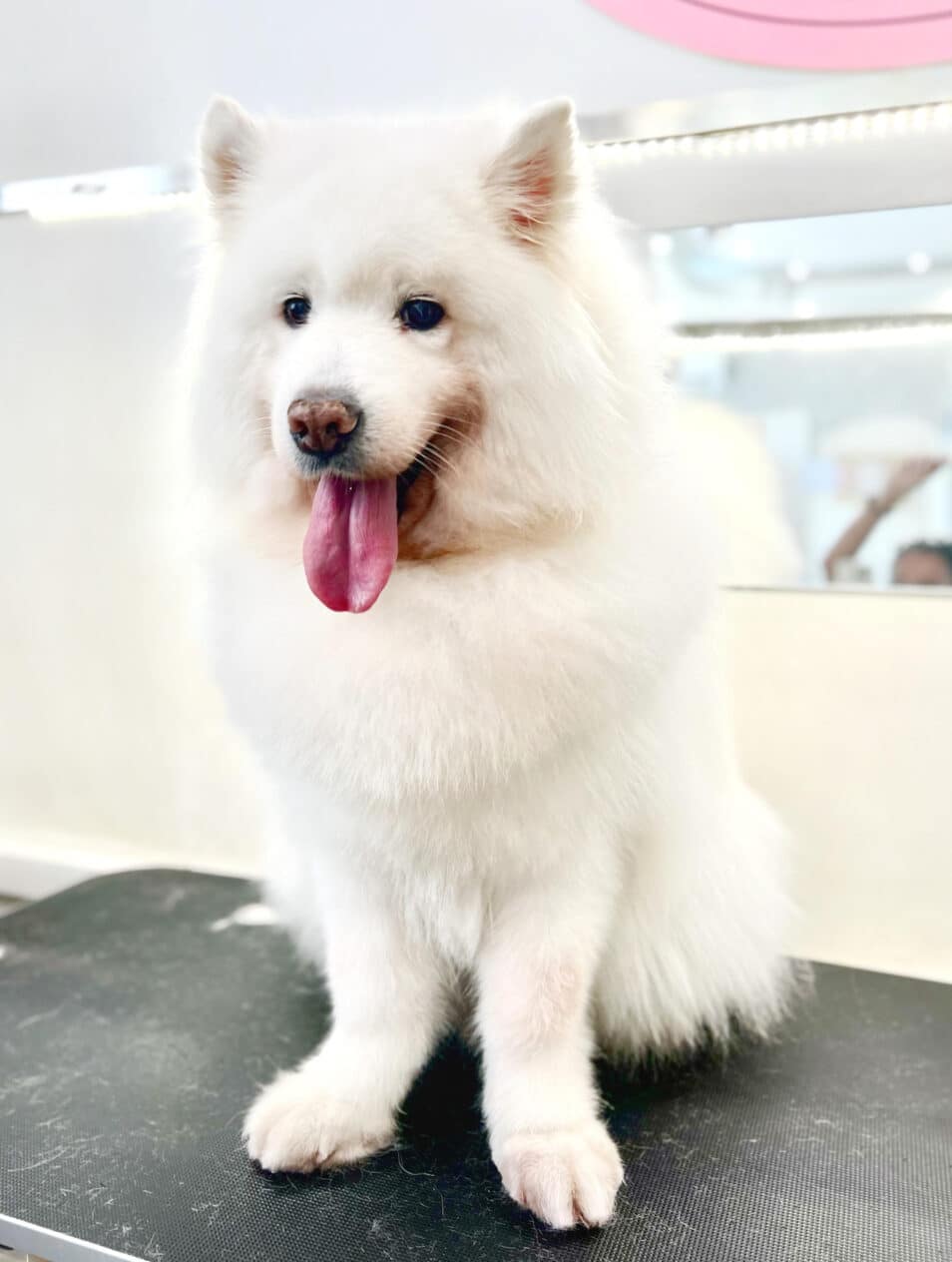
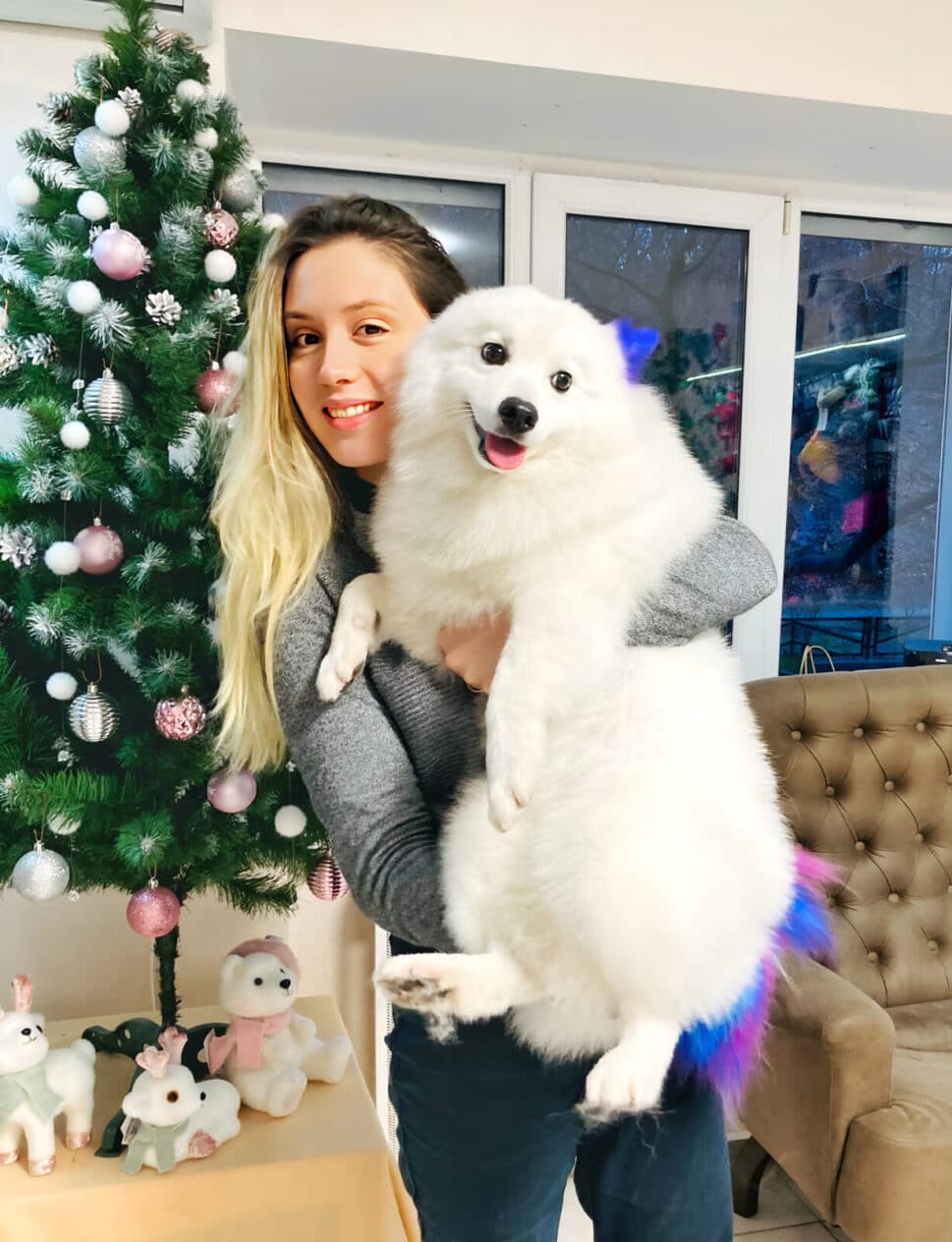
Грумінг самоїда – це важливий аспект догляду за цією породою, що вимагає професійного підходу. Ціна послуг грумінгу залежить від багатьох факторів, включаючи розмір собаки, стан її шерсті, досвід грумера. Слід враховувати, що самоїди належать до середніх і великих порід, тому ціноутворення залежить від об’єму роботи. Якщо шерсть має ковтуни або дуже заплутана, процес вичісування може зайняти більше часу і ресурсів. Також висококваліфіковані грумери можуть брати вищу плату за свої послуги, що здорожчує візит.
У середньому, базовий пакет грумінгу для самоїда в мережі салонів грумінгу «V.O.G DOG» може коштувати від 2500 грн. Варто враховувати, що при обранні додаткових послуг вартість може збільшитись. Але, незважаючи на високу ціну, регулярний і якісний грумінг допомагає зберегти здоров’я та красу самоїда, що робить ці інвестиції виправданими для багатьох господарів.
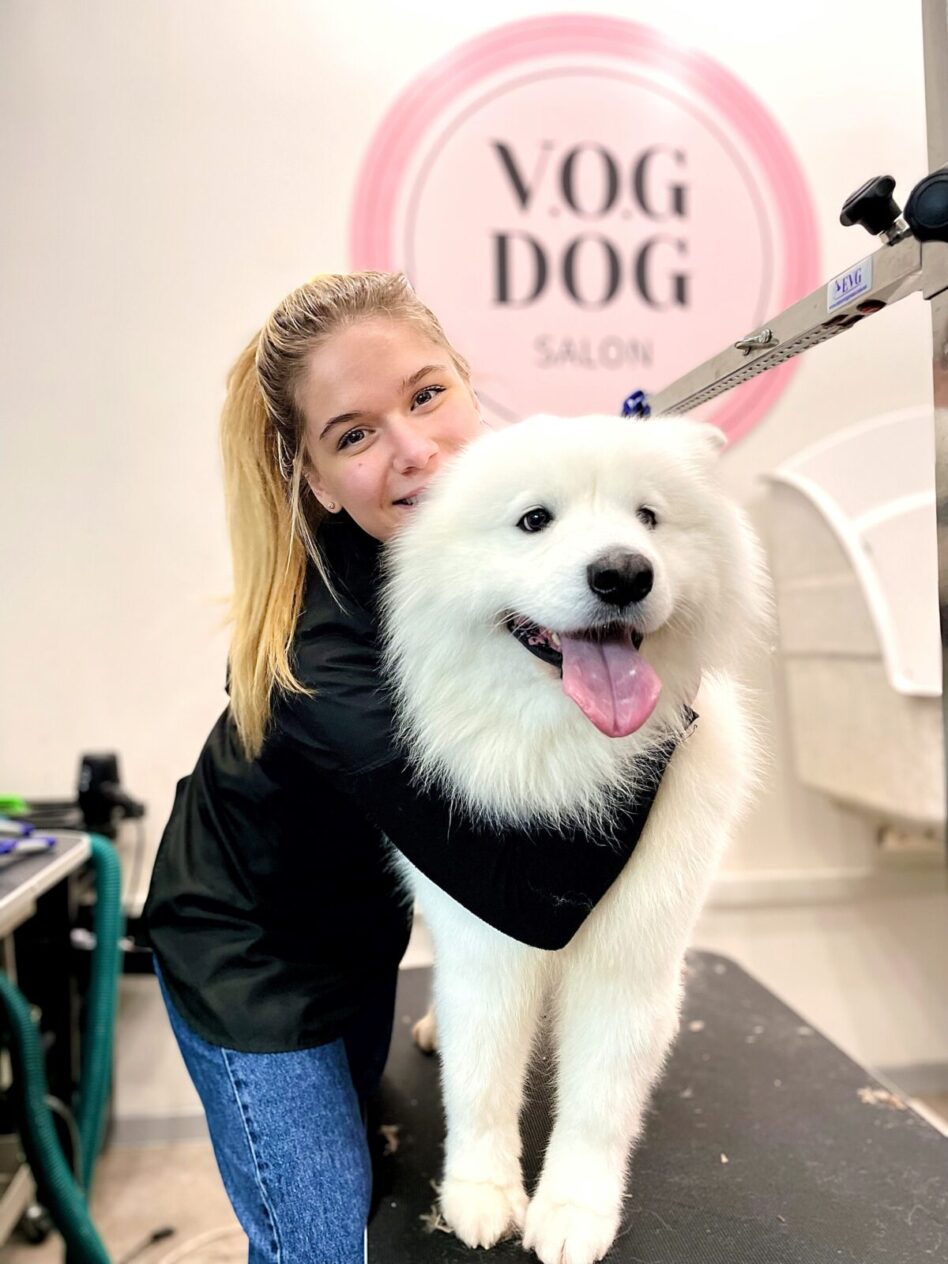
Summing up, we can say that Samoyeds are not only beautiful, but also extremely loyal and friendly dogs. They need attention, care and an active lifestyle, but in return they give their owners unforgettable moments of joy and love. If you are ready for active leisure and are ready to take care of a furry friend, the Samoyed will be a great companion and faithful friend for you. And the chain of beauty salons for animals “V.O.G DOG” will be happy to help you simplify the care of your pet and prevent the occurrence of many problems with its health.
